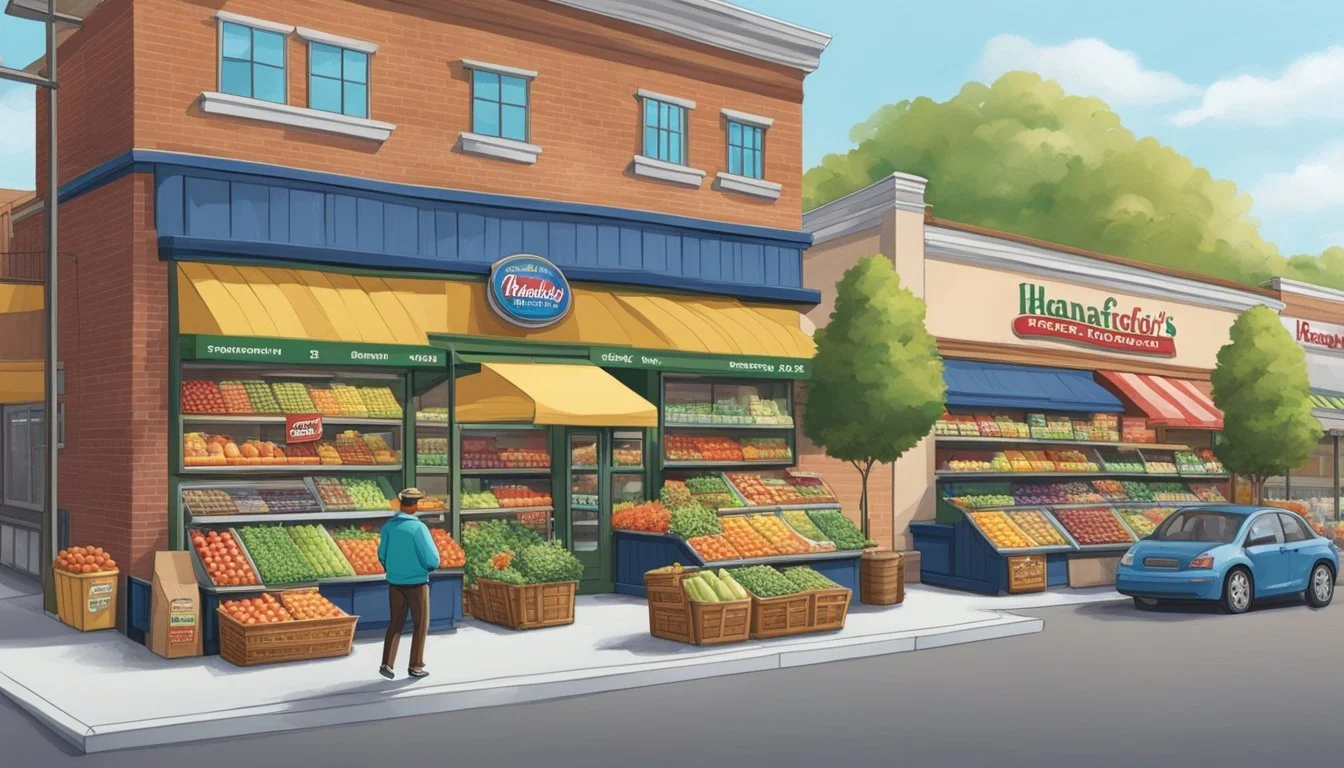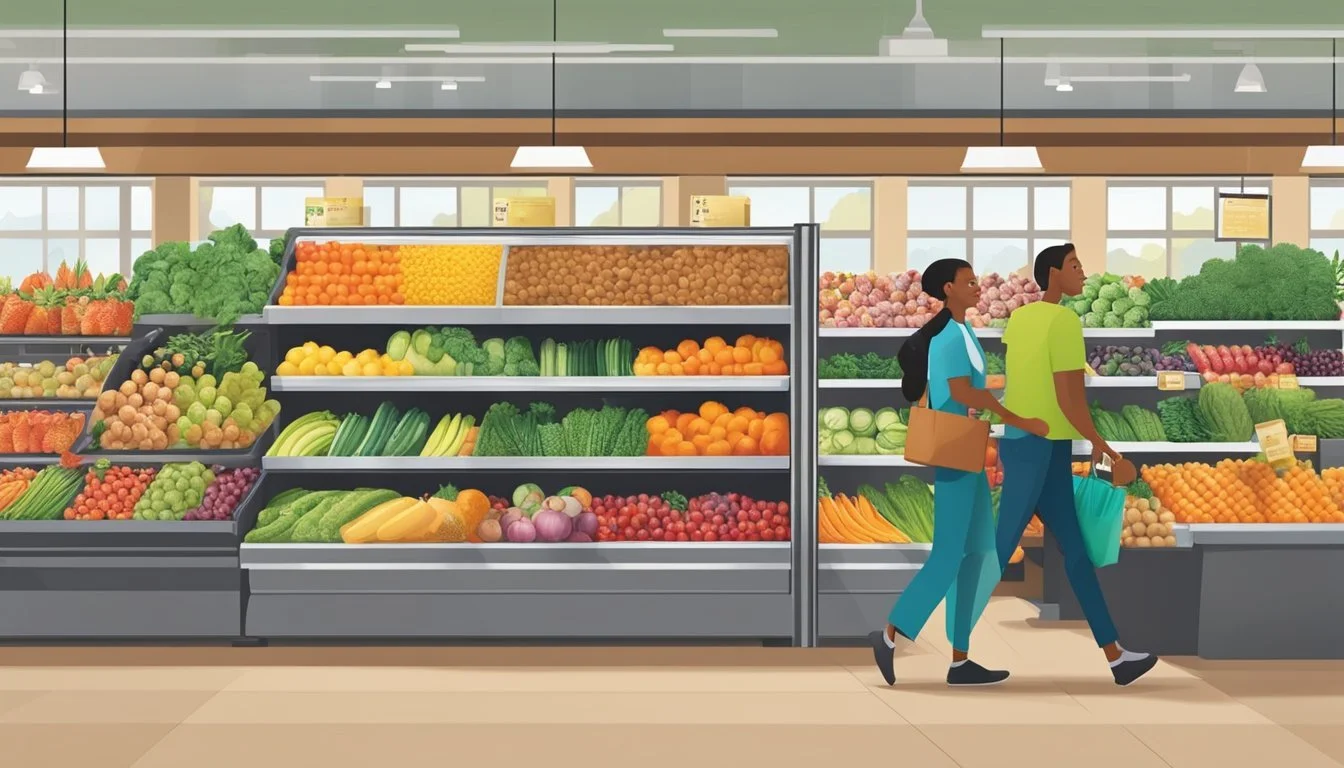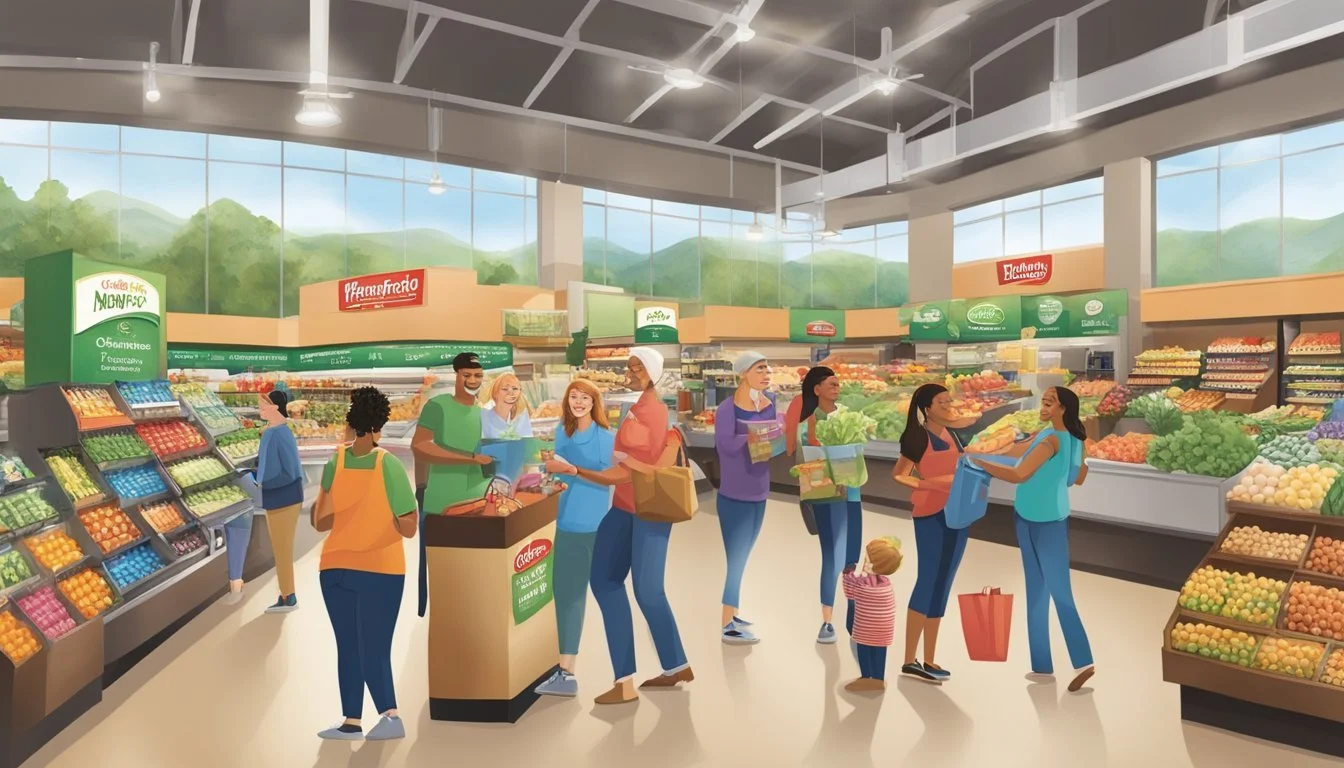Hannaford vs Raley's
A Comprehensive Comparison of Quality and Value
Hannaford and Raley's are two prominent grocery store chains serving different regions of the United States. Hannaford operates primarily in the Northeast, while Raley's serves customers in California and Nevada. Both supermarkets strive to provide quality products and exceptional service to their local communities.
When comparing these two grocery stores, several factors come into play, including product selection, pricing, customer service, and store atmosphere. While both Hannaford and Raley's have loyal customer bases, Hannaford tends to offer slightly lower prices on everyday items, giving it an edge for budget-conscious shoppers.
Each supermarket chain has its unique strengths. Hannaford is known for its focus on healthy living and sustainable practices, offering a wide range of organic and locally sourced products. Raley's, on the other hand, prides itself on its fresh produce selection and in-store dining options. Ultimately, the choice between Hannaford and Raley's often comes down to personal preference and geographical location.
Company Overviews
Hannaford and Raley's are both respected grocery chains with long histories in their respective regions. Each company has grown from humble beginnings to become a significant presence in the supermarket industry.
History of Hannaford
Hannaford traces its roots to 1883 when Arthur Hannaford began selling produce from a cart in Portland, Maine. The business expanded rapidly, opening its first grocery store in 1902. By the 1920s, Hannaford operated a chain of self-service supermarkets.
In 1987, Hannaford introduced its private label brands. The company went public in 1971 and was later acquired by Delhaize Group in 2000. Today, Hannaford operates over 180 stores across five Northeastern states.
Hannaford has been a pioneer in sustainability efforts. In 2009, it opened the first LEED Platinum-certified supermarket in the world. The company is known for its focus on fresh, local products and community involvement.
History of Raley's
Raley's was founded in 1935 by Thomas P. Raley in Placerville, California. The company started as a single drive-in market and gradually expanded throughout Northern California. In the 1950s, Raley's introduced in-store pharmacies, a novel concept at the time.
The company remained family-owned and operated, with Thomas Raley's daughter Joyce Raley Teel taking over leadership in 1992. Raley's acquired several other regional chains, including Bel Air Markets and Nob Hill Foods.
Raley's has been recognized for its commitment to sustainability and healthy living. The company launched its "Shelf Guide" program in 2017 to help customers make informed food choices. As of 2024, Raley's operates over 120 stores across California and Nevada.
Store Locations and Demographics
Hannaford and Raley's operate in distinct regions of the United States, serving different demographic areas. Their store locations reflect their market strategies and regional focus.
Hannaford's Presence
Hannaford maintains a strong presence in the Northeast United States. The supermarket chain operates over 180 stores across five states: Maine, New Hampshire, Vermont, Massachusetts, and New York. Hannaford's stores are predominantly located in suburban and rural areas, catering to communities of various sizes.
In Maine, Hannaford is particularly ubiquitous, with stores in both larger cities like Portland and smaller towns. The chain's New Hampshire locations serve areas from the seacoast to the Lakes Region. Vermont stores dot the state, including locations in Burlington and Rutland.
Hannaford has expanded into eastern and central Massachusetts, competing with other regional chains. In New York, the company focuses on the eastern part of the state, including the Capital Region around Albany.
Raley's Market Reach
Raley's operates primarily in Northern California and Nevada, with a concentrated presence in the Sacramento metropolitan area. The company has over 120 stores across its various brands, including Raley's, Bel Air, and Nob Hill Foods.
In California, Raley's stores are found in diverse locations, from urban centers to smaller towns in the Central Valley. The chain serves communities in and around Sacramento, as well as in the San Francisco Bay Area through its Nob Hill Foods brand.
Raley's Nevada presence focuses on the Reno-Sparks metropolitan area, providing grocery options for this growing region. The company has also expanded into rural areas, filling gaps in underserved markets.
Raley's store locations often target middle-income neighborhoods and family-oriented communities, reflecting its emphasis on fresh, quality products and customer service.
Product Range Comparison
Hannaford and Raley's offer diverse product selections to cater to various customer needs. Both stores provide a mix of national brands, private labels, and specialty items across different departments.
Unique Brands and Products
Hannaford features its own private label, Hannaford Brand, which offers quality products at competitive prices. The store also carries Taste of Inspirations, a premium private label line. Hannaford's Nature's Place brand focuses on natural and organic options.
Raley's presents its own private labels, including Raley's, Nob Hill Trading Co., and Raley's Purely Made. The Nob Hill Trading Co. line offers gourmet and specialty products, while Raley's Purely Made emphasizes clean ingredients and minimal processing.
Both stores stock a range of national brands, but Raley's tends to offer more regional and local products, particularly in its California locations.
Organic and Fresh Produce
Hannaford's produce section includes a wide variety of organic fruits and vegetables. The store partners with local farmers to provide fresh, seasonal produce. Hannaford's meat department offers grass-fed beef and free-range poultry options.
Raley's emphasizes its commitment to fresh, high-quality produce. The store's "Farm to Fork" program highlights locally sourced fruits and vegetables. Raley's also provides an extensive organic selection, including pre-cut organic produce for convenience.
Both chains prioritize product freshness and quality. Raley's tends to have a larger organic selection, while Hannaford focuses on affordable organic options through its private label.
Quality and Freshness of Goods
Hannaford and Raley's both prioritize quality and freshness in their product offerings. Their approaches to sourcing and presenting perishable items differ in some key areas.
Meat and Seafood
Hannaford emphasizes locally sourced meats and sustainable seafood options. Their meat department features cuts from regional farms, often labeled with the farm of origin.
Raley's partners with trusted suppliers to provide high-quality meats. They offer a range of USDA Choice and Prime beef cuts, as well as organic and grass-fed options.
Both stores maintain seafood counters with fresh fish and shellfish. Hannaford focuses on wild-caught seafood from the North Atlantic, while Raley's sources from both coasts and international suppliers.
Bakery and Prepared Foods
Hannaford's in-store bakeries produce a variety of breads, pastries, and cakes daily. They offer a mix of traditional and artisanal options, with an emphasis on using clean ingredients.
Raley's bakeries feature a wider selection of specialty items, including European-style pastries and custom cakes. They also provide more gluten-free and sugar-free choices.
In prepared foods, Hannaford offers a selection of grab-and-go meals and salads. Their options tend to focus on simple, familiar recipes.
Raley's prepared foods section is more extensive, with hot food bars, made-to-order sandwiches, and chef-prepared entrees. They emphasize gourmet options and international cuisines.
Pricing Structure
Hannaford and Raley's employ distinct pricing strategies to attract and retain customers. Both chains focus on offering competitive prices while implementing unique discount programs.
Everyday Prices
Hannaford emphasizes everyday low prices across its product range. The chain strives to maintain consistent pricing without relying heavily on weekly sales or promotions. This approach allows customers to shop with confidence, knowing they'll find reasonable prices on most items during each visit.
Raley's, on the other hand, tends to have slightly higher everyday prices compared to Hannaford. However, Raley's often offsets this with a wider selection of premium and specialty products.
Both stores offer competitive pricing on staple items like milk, bread, and eggs. Hannaford typically edges out Raley's in terms of affordability for these essential groceries.
Discounts and Savings Programs
Hannaford's My Hannaford Rewards program provides customers with personalized deals and cash-back offers. Members earn 2% back on store-brand purchases and receive targeted coupons based on their shopping habits.
Raley's Something Extra rewards program offers similar benefits. Members earn 1 point for every $1 spent, with 500 points converting to a $5 reward. Raley's also provides digital coupons and personalized deals through its mobile app.
Both chains run weekly sales, but Raley's tends to offer more frequent and deeper discounts on select items. This can lead to significant savings for savvy shoppers who plan their purchases around these promotions.
Hannaford's price-matching policy allows customers to get the lowest advertised price on identical items sold by local competitors, potentially saving shoppers money without the need to visit multiple stores.
Customer Services and Shopping Experience
Hannaford and Raley's prioritize customer satisfaction through a range of services and positive shopping environments. Both chains strive to meet diverse customer needs and preferences.
In-Store Services
Hannaford offers full-service pharmacies in many locations, providing prescription fulfillment and health consultations. Their delis feature made-to-order sandwiches and prepared meals. Raley's also operates in-store pharmacies and deli counters with fresh offerings.
Both chains provide bakery departments with freshly baked goods. Raley's offers a wider selection of specialty foods and organic options compared to Hannaford. Self-checkout lanes are available at most stores of both chains to reduce wait times.
Hannaford emphasizes its commitment to local products, featuring items from regional suppliers. Raley's focuses on its private label brands and curated product selections.
Customer Care
Staff courtesy is a priority for both Hannaford and Raley's. Employees are trained to be helpful and knowledgeable about product locations and information. Raley's is known for its "Something Extra" loyalty program, offering personalized deals and rewards.
Both chains maintain clean, well-organized stores. Hannaford uses a color-coded nutrition labeling system to help customers make informed choices. Raley's implements sustainable practices and educates customers on healthy eating.
Customer feedback mechanisms are in place at both chains. Hannaford offers a satisfaction guarantee on its store brand products. Raley's provides online ordering and curbside pickup services at many locations.
Consumer Ratings and Market Reputation
Hannaford and Raley's have distinct reputations among consumers. Survey data and expert reviews provide insights into how shoppers perceive these supermarket chains.
Survey Outcomes
Consumer Reports ranked Hannaford highly among Northeast grocery stores. The chain scored well for its competitive pricing, with prices 11% lower than the regional average. Customers praised Hannaford's store brands and product quality.
Raley's, primarily operating in the Western U.S., wasn't included in the same Consumer Reports survey. However, local polls show strong customer loyalty. Shoppers appreciate Raley's fresh produce and prepared foods.
Both chains received positive feedback for cleanliness and staff friendliness. Hannaford earned recognition for its rewards program, while Raley's got high marks for its community involvement.
Expert Reviews
Industry analysts commend Hannaford for its sustainable practices and focus on local products. The chain's commitment to offering affordable organic options has been highlighted in trade publications.
Raley's has garnered attention for its innovative store layouts and emphasis on health-conscious offerings. Experts note the chain's efforts to educate customers about nutrition through in-store signage and online resources.
Both supermarkets have been praised for their adaptability during recent supply chain challenges. Hannaford's efficient inventory management and Raley's strategic partnerships with local suppliers have been cited as strengths.
Loyalty Programs and Community Involvement
Hannaford and Raley's have implemented loyalty programs and sustainability initiatives to engage customers and support their communities. These efforts provide value to shoppers while promoting environmental responsibility.
Membership Benefits
My Hannaford Rewards offers members 2% back on store brand purchases. This program incentivizes buying Hannaford-branded items across departments, including fresh meats, seafood, and deli products. Members receive personalized digital coupons based on their shopping habits.
Raley's loyalty program analyzes transaction data to segment customers and tailor offers. Price-sensitive shoppers may receive targeted discounts. The program helps Raley's understand purchasing patterns and enhance the customer experience.
Both supermarkets use loyalty data to improve inventory management and personalize marketing. Members gain access to exclusive deals and accumulate rewards on regular grocery purchases.
Sustainability Efforts
Hannaford emphasizes reducing food waste through strategic partnerships. The company donates unsold but still edible food to local hunger relief organizations. Energy-efficient lighting and refrigeration systems have been installed in stores to lower environmental impact.
Raley's focuses on sustainable sourcing practices. The supermarket chain works directly with farmers to offer more organic and locally-grown produce options. Raley's has also implemented recycling programs for plastic bags and packaging materials in many locations.
Both grocers encourage customers to bring reusable shopping bags. They offer small discounts or loyalty points as incentives for this eco-friendly practice.
Comparison Conclusion
Hannaford and Raley's each offer unique strengths as grocery chains. Hannaford stands out for its competitive pricing, with studies showing prices around 11% below average in some markets.
Raley's excels in product quality and customer service. Their stores often feature wider aisles and a more upscale shopping experience.
Both chains prioritize fresh produce and meat departments. Hannaford emphasizes value, while Raley's focuses on premium selections.
Store locations differ significantly. Hannaford operates primarily in the Northeast, whereas Raley's serves the Western United States.
Loyalty programs vary between the chains. Hannaford offers My Hannaford Rewards, providing personalized deals and points. Raley's Something Extra program includes targeted coupons and exclusive discounts.
The best choice depends on individual priorities. Budget-conscious shoppers may prefer Hannaford. Those seeking a more premium experience might opt for Raley's.
Ultimately, both chains maintain strong reputations in their respective markets. Local availability and personal preferences will heavily influence which store is the better option for each shopper.







